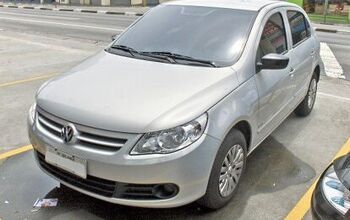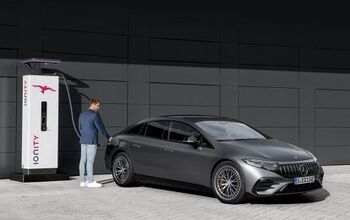Dispatches Do Brasil: Global Ranger Arrives In Brazil

Serendipity is what I believe it’s called. On the day TTAC was aflutter with news and comments on the new Chevy Colorado and an out-of-the-box thinking proposal to get the Chevy Montana into the North American market, I got some news in my e-mail inbox. The new Ford Ranger has arrived in Brazil – but in regular cab form.
At about US$29,500, it is about 500 dollars more expensive than the priciest Fiat Strada. In Brazil, cars pay much higher taxes than in the US, but those prices mean very healthy margins. For that kind of dough, equipment on the Ranger is quite nice, but the ambience is the same in cars almost 10,000 dollars less. In other words, plastics, hard plastics and more plastics is what you find inside.
Besides plastic, the new truck offers power everything, a roll bar, graphics package, leather-wrapped steering wheel and a plethora of other niceties (or worthless add-ons depending on your perspective). Mechanically speaking, there’s an auto locking differential, ABS, EBD and the engine is an all-aluminum 2.5L I4 that has 168 or 173 hp if running on Brazilian gasoline (E+/-22) or pure Brazilian ethanol. Though that sounds relatively good, Brazilian enthusiast site bestcars.com.br says that at just 120km/h the engine is revving hard at 3,200 rpm.
Always an important thing in pickups, the bed is 7.5 feet long and has 1.800 L of volume up to the edges of said bed. This would be enough to carry two motorcycles in the bed without breaking too much of a sweat. It carries loads of up to 1400 kg, roughly double of the mini car-based trucklets and a far cry over the 900 kilos or so the Rangers that made it here in the mid 90s were good for.
The new single cab Ford Ranger takes indirect aim at the smaller Fiat Strada and Volkswagen Saveiro in Brazil, but it really competes against the Chevy S10 (known as Colorado in the US) and Toyota Hilux, both of which look rather unfortunate in the single cab configuration. The last single cab Ranger managed to sell about 10,000 units from 2007 until 2012, which compared to the roughly 10,000 sales a month the Fiat Strada manages is but a drop in the ocean. Would it suffer the same fate in North America or does the new single cab, long bed, global Ford Ranger have what it takes to become a player in America?
Note: All figures in this article taken from this article on bestcars.com.br.

More by Marcelo de Vasconcellos
Latest Car Reviews
Read moreLatest Product Reviews
Read moreRecent Comments
- SCE to AUX Range only matters if you need more of it - just like towing capacity in trucks.I have a short-range EV and still manage to put 1000 miles/month on it, because the car is perfectly suited to my use case.There is no such thing as one-size-fits all with vehicles.
- Doug brockman There will be many many people living in apartments without dedicated charging facilities in future who will need personal vehicles to get to work and school and for whom mass transit will be an annoying inconvenience
- Jeff Self driving cars are not ready for prime time.
- Lichtronamo Watch as the non-us based automakers shift more production to Mexico in the future.
- 28-Cars-Later " Electrek recently dug around in Tesla’s online parts catalog and found that the windshield costs a whopping $1,900 to replace.To be fair, that’s around what a Mercedes S-Class or Rivian windshield costs, but the Tesla’s glass is unique because of its shape. It’s also worth noting that most insurance plans have glass replacement options that can make the repair a low- or zero-cost issue. "Now I understand why my insurance is so high despite no claims for years and about 7,500 annual miles between three cars.


































Comments
Join the conversation
"Only a regular cab?"Remember what got us here in the first place? 4 doors, bigger this, bigger that, heavier everything! Now we come full circle and want a small, regular cab, 4 banger stick shift. Nuff said. Some of us dont need a compact that is a 7/8 F150.
Seems to me you ought to be able to sell cheapest small pickup truck for about the same price as cheapest sedan, but evidently not, or someone without a full-size truck to cannibalize would do it.